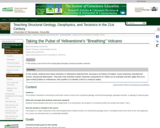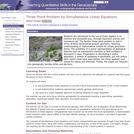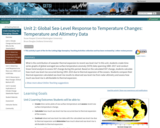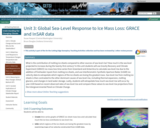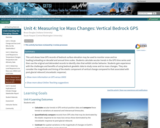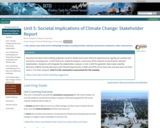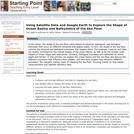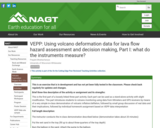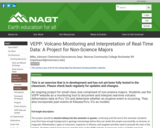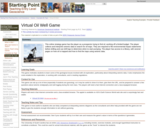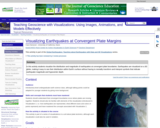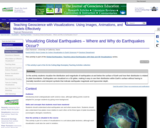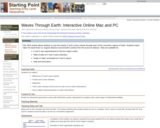This is an exercise that is in development and has not yet been fully tested in the classroom. Please check back regularly for updates and changes.
An ongoing project for small class size comprised of non-science majors. Students use the VEPP website as a monitoring tool to document and interpret real-time volcanic deformation data at Pu'u 'O'o and determine whether an eruptive event is occurring. They also incorporate past events at Kilauea/Pu'u 'O'o as models.
Full length description:
This project should be started midway into the semester or quarter, continuing until the end of the semester (students must first have enough background in geology/volcanology before they can tackle this project successfully, so lectures on magmatic differentiation, types of volcanism- explosive vs effusive, and targeted activities need to precede the start of the project). Students need to know how to read the data on the VEPP website- if classroom wi-fi is available and most students have laptops, instruction on navigation and interpretation can take place in the classroom; if not, a computer lab may be required for at least one class session. However, a large part of familiarizing students with the website can also be accomplished lecture-style by the instructor logging on in a 'smart' classroom.
Students should be divided into three (or some suitable number of) groups: each group will be responsible for reporting weekly on a specific monitoring technique (tilt, seismic, GPS), retrieving and interpreting their information from VEPP/VALVE website. Additional information including updates, past information and geology may be obtained from the USGS Hawaiian Volcano Observatory website.
Students will report current deformation information each week in a "Monday morning meeting" format- each of the three groups will pass out a brief written summary on the data they are responsible for, and give an oral report with questions from the other two groups to follow each presentation. Team spokespersons will rotate every week. Each group will touch on potential sources of error associated with their particular monitoring technique, and attempt to differentiate between real information and what might be extraneous "noise". Groups should be given a short time to confer in class before they present, but prior outside group meetings will be essential to a successful weekly presentation.
At the end of the three group presentations, the instructor should moderate a general discussion by all in an attempt to have the groups integrate their data (i.e., does one data set support another? Is there disparity? What conclusions can be drawn from this particular week's information, and how does it seem to fit, both short-term and long-term?). Instructor may introduce other information sources, like live webcam photos and/or a discussion of past history, to offer support, or lack of support, for a specific interpretation of data being presented by a team or teams (HVO website is a great resource for this).
As the semester proceeds, each of the groups plot their data on a large graph situated in the front of the class. We'll use both graphical plots and location maps to pinpoint events if they occur. Lectures will incorporate other tools to hopefully enhance and lend credence to the interpretation process- use of geologic observations, gas emissions and other information, the main reference source being the HVO website. Past Kilauea/Pu'u 'O'o events will need to be examined for comparison purposes.
This exercise is meant to simulate some of the tasks that volcanologists undertake in the real world.
(Note: this resource was added to OER Commons as part of a batch upload of over 2,200 records. If you notice an issue with the quality of the metadata, please let us know by using the 'report' button and we will flag it for consideration.)

